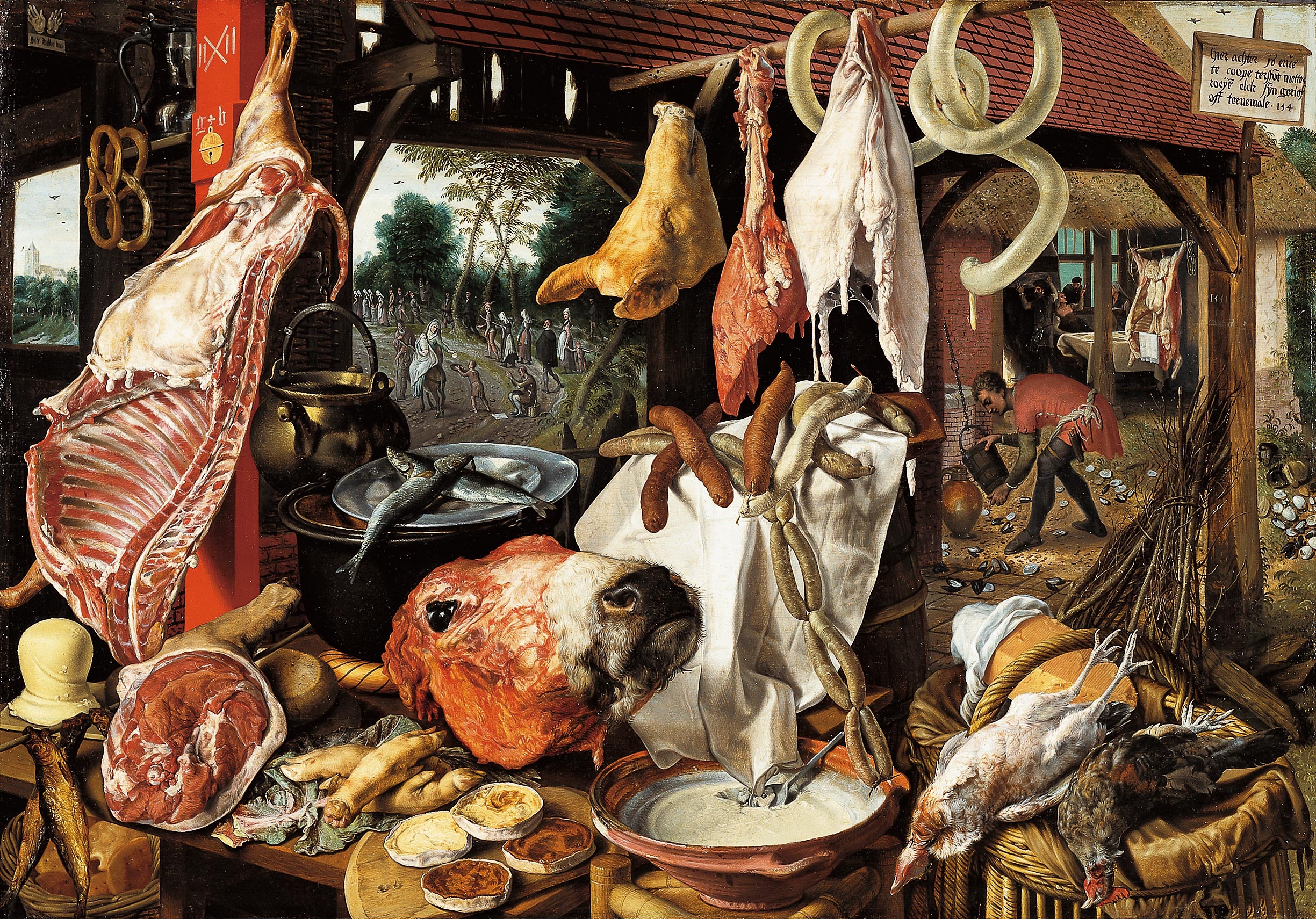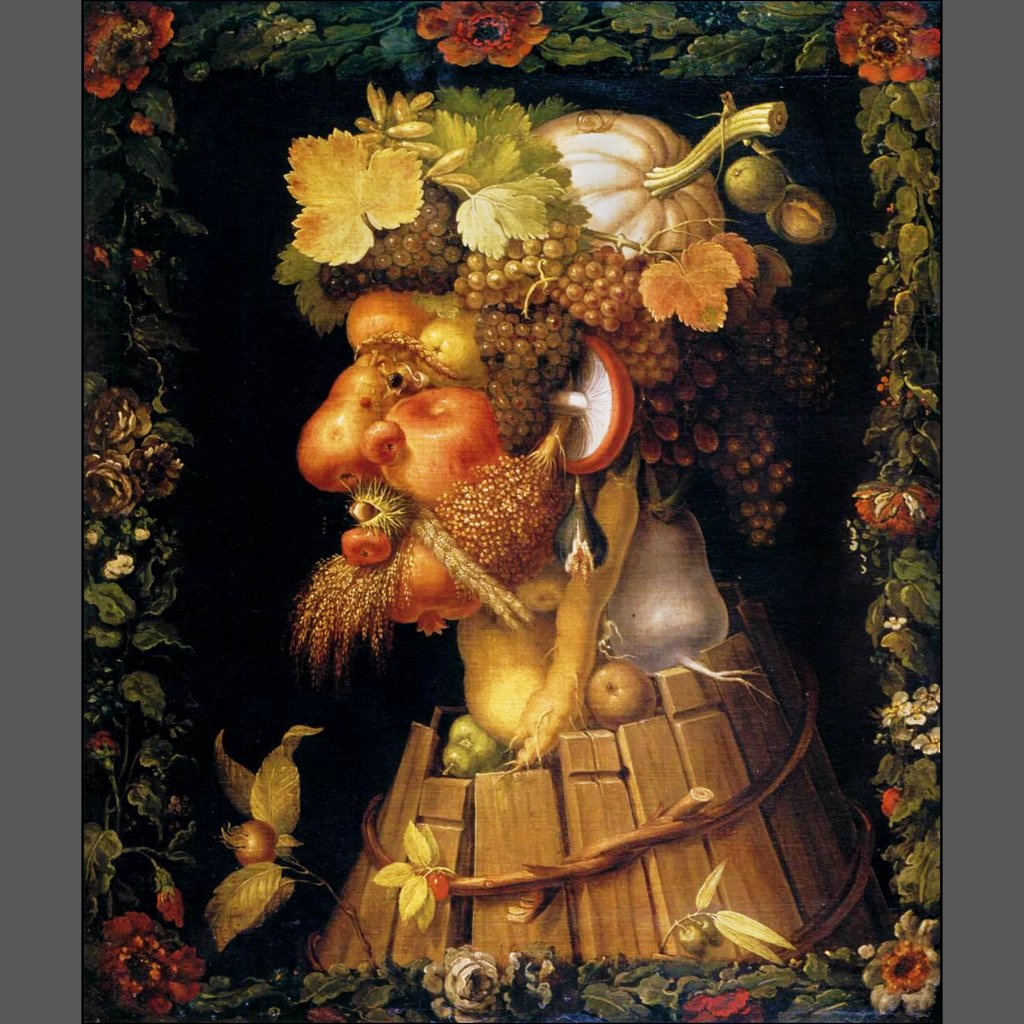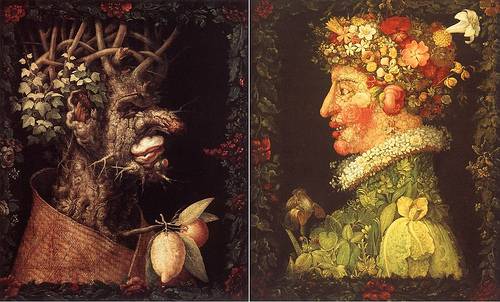Reflection on reading Food
in Painting by Kenneth Bendiner
My tutor
recommended that I read the book Food in
Painting leading up to assignment two which has been a fascinating read and
greatly helped me understand the history behind food images, concentrating on
great classic paintings from the renaissance and Dutch masters to contemporary
twentieth and twenty-first century artists.
I found it
intriguing to discover stories behind food in painting and the many meanings that food could symbolise or depict. It comments
on the link between food and health; Food and social class; food and its place
in society and how food, and therefore food in painting, has changed in all
these mentioned areas as society moved towards industrialization and modernity.
Without
launching into a literature review of the book I wanted to highlight a few
concepts, artists and paintings that particularly stood out for me:
1. Food imagery
through the centuries has more often then not, represented satisfaction, satiety, pleasure and abundance! It’s beauty, just
like the cookbook photographs of today, can stimulate appetite and aimed to do
just this. When everything looks tasty our stomach juices start flowing!
Bendiner gives
many examples of paintings depicting the abundance of food in the market place,
an equivalent of our modernized supermarket or shop, as well as in feasts or
even within still life paintings throughout the eras.
Flight into Egypt, (The Meat Market), 1551:Aertsen, Pieter (08 -
1575)
The Wedding Meal at Yport, 1886 (oil on canvas)Fourie, Albert-Auguste
Wayne Thiebaud, Pie Counter, 1963. Oil on canvas,
30 × 36 in.
The Fruit of the
Earth, 1938 (oil on canvas)Kahlo, Frida
The exceptions to
this were the artists like Andy Warhol who in the 1960s and 70s began to mock
the soothing vision of food.
Campbell's Soup Cans, 1965 (silkscreen on
canvas)
Ironically Bendinger pointed out that although the
artist was trying to criticize the abundance of food in the postmodern world as
a comment on our consumer-driven society, the public didn’t perceive this
negative vision and the lines of soups or coca cola were viewed with delight,
allowing people to reminisce to their childhood days before the war and
representing colourful objects of modern life.
1.
Food is linked to health, and this is fact is represented
in many food paintings throughout the centuries, whether it is symbolising the
ancient medicinal beliefs about food in the Renaissance or our modern
understanding of nutrition.
I found it
fascinating reading about the ancient medical beliefs of influential writers of
the renaissance like Galen followed by physicians of the middle ages, who wrote
that foodstuffs had particular characteristics of warmth and coldness, dryness
and wetness and the goal of the diet was to have a balance of these
characteristics so as not to shift the balance to a person’s temperament. An interesting example that Bendiner uses is
the painting by Eugene Delacroix where there is a lobster included in a hunting
scene. Delcroix’s lobster has properties of
wetness and coldness, to balance the relative dryness and warmth of the
land-bound hare and air-borne Jay nearby.
Still Life with Lobsters, 1826-27 (oil on canvas),Delacroix, Ferdinand
Victor Eugene (1798 - 1863)
I found it particularly of interest that these
ancient medical beliefs continued to pervade food images from the Renaissance
into the nineteenth century.
Edouard Manet was
one of the pioneers regarding stepping away from ancient medical concepts of
the four elements proposed by Galen and this is shown in his painting Still
life with Carp (1864). Bendiner comments that Manet was in world when fine
taste counted for more than anything, especially in France.
Edouard Manet, Still life with carp 1864, oil on canvas
The idea of a
balanced diet being linked to health and promoting healthy living is still very
much a part of modern society and represented in many an advert. A good example
of this is the recent trend for all food to be organic!
1. 3. Food in painting is often representative of socio
economic status by virtue of what food is represented or perhaps how it is
composed or presented. Foe example Vincent Van Gogh’s The Potato Eaters or even
Claude Monet’s Still-life, the joint of
meat (1864). Unbeknown to me, this slice of beef would have been a lower class
slice used for making Swiss steak in France. It is only accompanied by a clove
of garlic for seasoning and a humble pottery mug, indicating it is a meal of
someone of less financial means.
The
Potato Eaters (1885) Oil on canvas, Vincent Van Gogh
Still Life, the Joint of Meat, 1864 (oil on canvas)Monet, Claude
Alt Though this is not as overt in today’s world,
it is clear to me that images in advertising draw on these principles to an
extent by targeting either an “upmarket” (AKA expensive) supermarket where
people of greater financial means would shop or they target more basic (AKA
cheaper) supermarkets/products where people with less
disposable income will shop.
1.
Food is very symbolic and therefore is often used
to either be a double meaning. He
comments on fruit often representing religion or sexuality or certain foods,
like meat, representing wealth or power.
2.
Food images often also include other
objects/elements in the image for example tables, chairs, people, flowers,
crockery and use food more subtly to make a comment. Eg: Jean Brusselmans Woman in kitchen (1935)
1.
Food imagery, especially when it comes to fruit
and veg, is generally brightly coloured or perhaps it has stark contrasts that
make the fruit and veg stand out. Frida Kahlo and Paul Cezanne demonstrate this
beautifully:
The Bride
Frightened at Seeing Life Opened by Frida Kahlo
Still Life with Parrot and Fruit by Frida Kahlo
Still Life with Apples, 1893-94 (oil on canvas)Cezanne, Paul (1839 -
1906)
Food Food can represent the change in seasons and there are no more suited paintings to represent
this then those done by Giuseppe Archimboldi.
1
T The four seasons as represented by Arcimboldi,1573.
Summary
I have
thoroughly enjoyed reading more about the history of food imagery and I feel it
has given me a greater understanding of how varied it can be as well as it’s
importance in the history of art. I have certainly learnt more about the
context in which many food images were created and feel that this is still very
relevant for today.
I hope to try
and use some of what I have learnt in assignment two when we are required to
create our own seasonal food image!!
T















